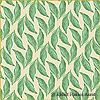Getting one's own hands dirty
I recently went to see a "video installation" by the up-and-coming Lida Abdul, free courtesy of the Toronot Arts Council.
Adbul’s biography makes it clear that she is a refugee of the Soviet-Afghani war of the 1970s, and she’s traveled the world in that capacity. In the program notes, not her website, she is described as a "permanent resident of Kabul" and "lives in Chicago." Globe-trotters can never be really sure – to themselves or to others – exactly where their feet are planted.
This brings me back to conceptual art. It is this very sense of displacement, I believe, that feeds the work.
Abdul’s work tries to deal with rebuilding the worn-torn Afghani landscape. Yet, she cannot even offer concrete artistic projects to fulfill this yearning.
Her three video pieces deal with her own obsessions, and often at the expense of the real residents of that land.
White House – (also pun on the real White House? Probably) – shows her painting a rubble of stones with white paint. Along comes a male, who submissively stands facing a wall, whom she also paints over in this white mortar.
 |
War Games (What I Saw) has two Afghani men on horse back, with ropes tied around the horses and a bombed out building, trying to pull down the structure. They never making a dent in the demolition, but endlessly circle it.
 |
Brick Sellers of Kabul is a long line of young boys waiting to reach the front to hand over the bricks – for money.
 |
All three have a heavy element of cynicism in them. Is it the woman who is the ultimate builder of Afghanistan? Are the two horsemen really doing anything? What hope is there for youngsters who wait endlessly in line to get a few coins for the building blocks of their country?
Abdul, in her Chicago office, and her Italian Gallery (where this work appears to be on permanent display), is offering nothing. Her work is neither a lamentation nor a spark of hope. She would have been better off getting her own hands dirty and really build something.













